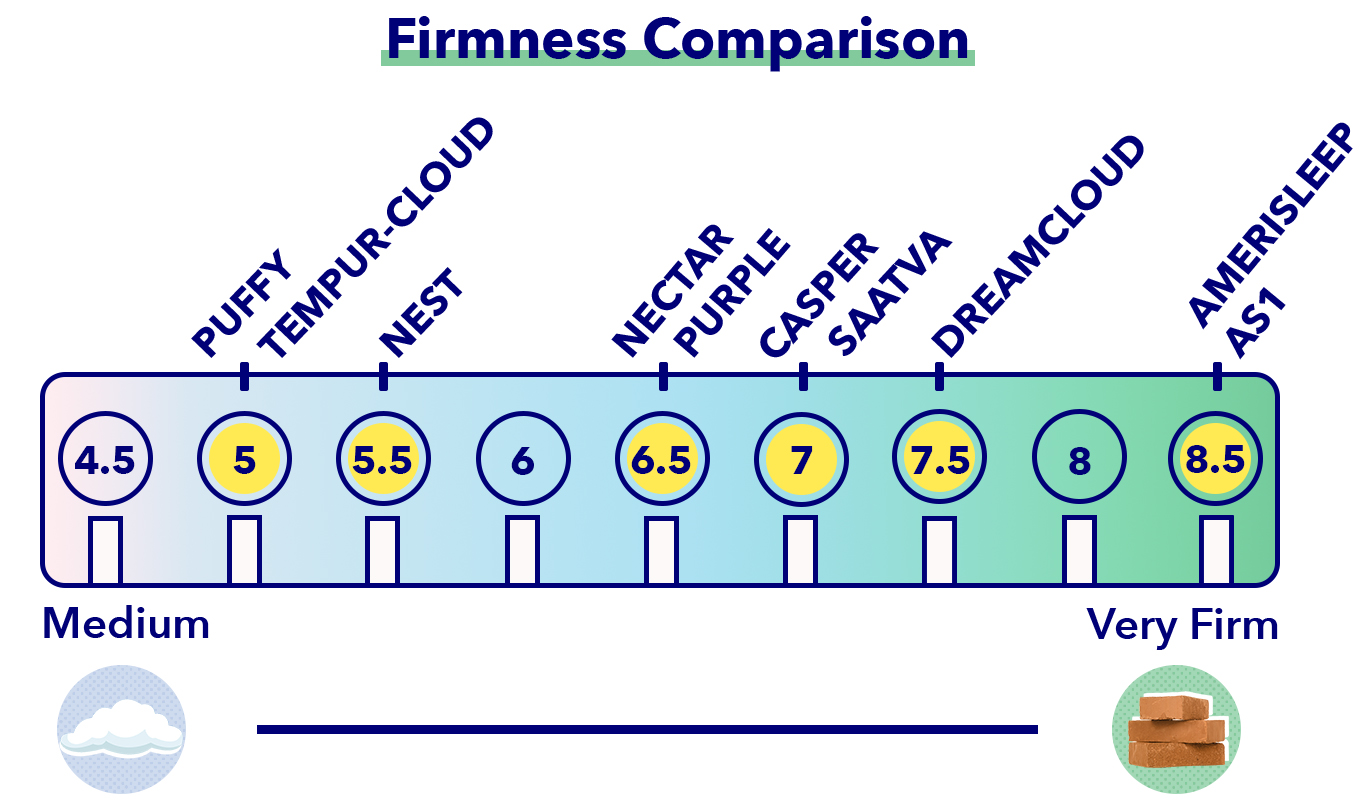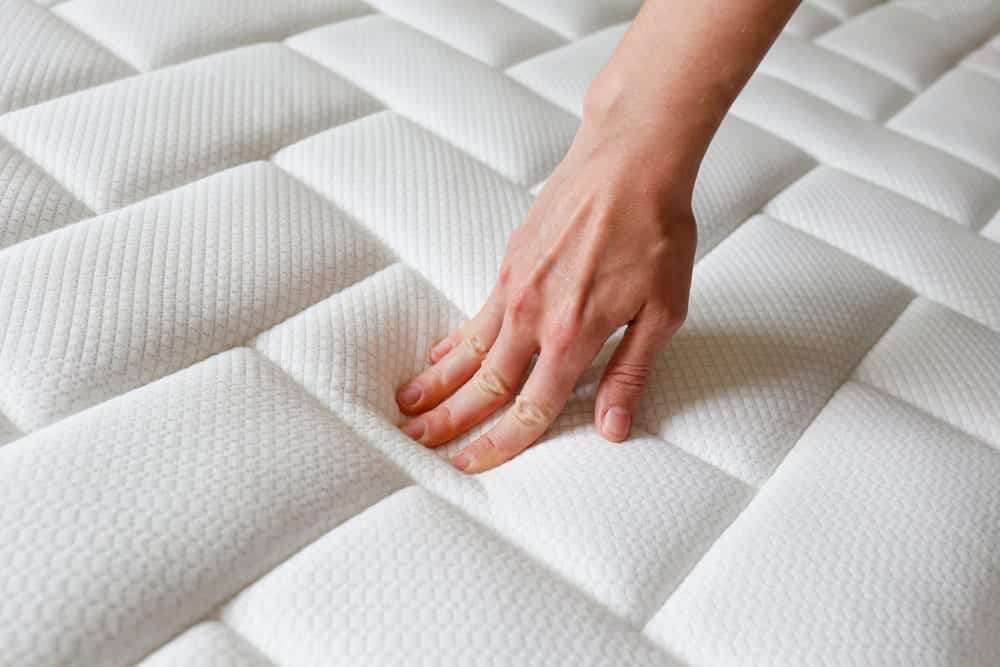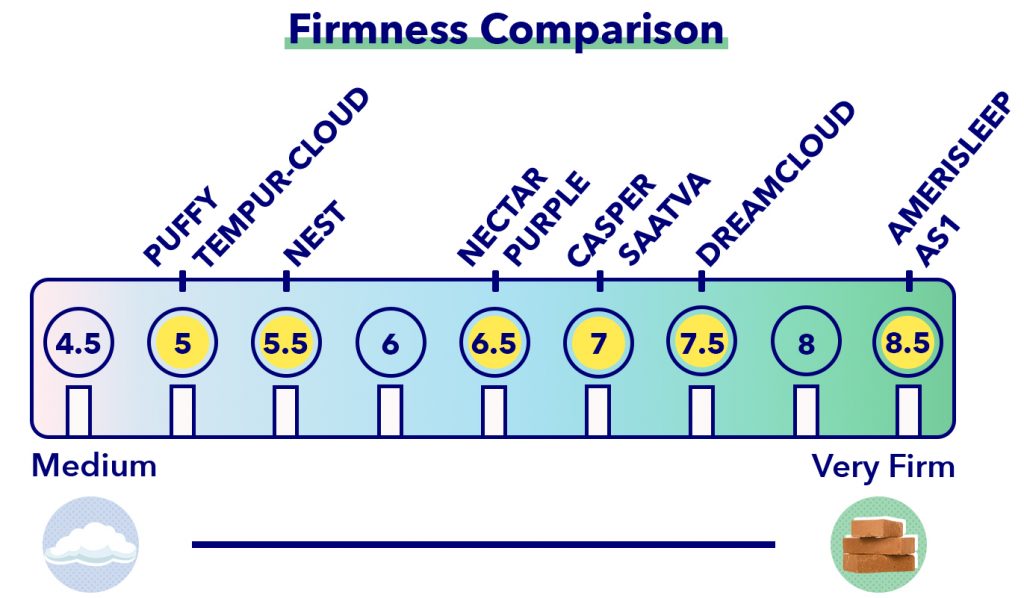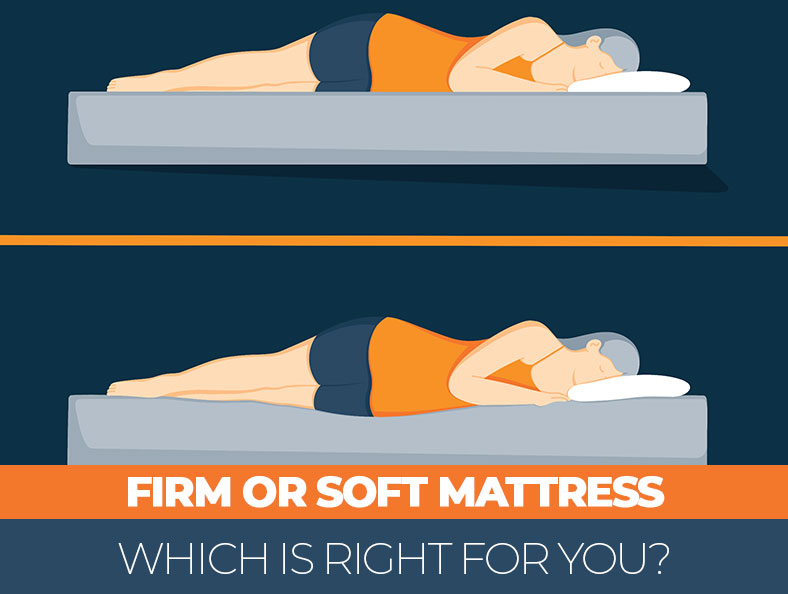1. Firmness Scale
When it comes to buying a new mattress, one of the most important factors to consider is its firmness level. Mattress firmness refers to how soft or firm the surface of the mattress feels to the sleeper. It is crucial to choose the right level of firmness, as it can greatly impact your sleep quality and overall comfort.
The firmness scale is a numerical rating system that ranges from 1 to 10, with 1 being the softest and 10 being the firmest. Most mattresses fall between a 3 and 8 on the scale, with very few being rated as a 1 or 10. Understanding the firmness scale can help you determine which level is best for your specific needs and preferences.
2. Mattress Comfort Levels
Comfort is subjective and can vary from person to person. However, mattress manufacturers have categorized mattresses into three main comfort levels: soft, medium, and firm. These levels correspond to specific firmness ratings on the scale and can help guide you in choosing the right mattress for your needs.
A soft mattress typically falls between a 3 and 5 on the firmness scale and provides a plush and cushioned feel. A medium mattress falls between a 5 and 7, offering a balance between support and comfort. A firm mattress falls between a 7 and 9, providing a more supportive and less cushioned feel.
3. Plush vs Firm Mattress
The terms "plush" and "firm" are often used to describe mattresses, but what do they really mean? A plush mattress is typically on the softer end of the scale, providing a comfortable and cushioned feel. This is a popular choice for those who prefer a softer sleeping surface or for side sleepers who need extra pressure relief for their shoulders and hips.
On the other hand, a firm mattress is ideal for those who prefer a more supportive sleeping surface. It is also a good choice for back or stomach sleepers who need more support for their spine. A firm mattress can also help alleviate back pain by keeping the spine aligned while sleeping.
4. Mattress Firmness Guide
When shopping for a new mattress, it can be overwhelming to navigate through the different firmness options. However, there are a few factors to consider that can help guide you towards the right level of firmness for your body and sleep preferences.
First, consider your preferred sleeping position. Side sleepers typically need a softer mattress to cushion their shoulders and hips, while back and stomach sleepers may need a firmer mattress for proper support. Next, take into account your body weight. Heavier individuals may need a firmer mattress for better support, while lighter individuals may find a softer mattress more comfortable.
5. Choosing the Right Mattress Firmness
Ultimately, the right level of mattress firmness will depend on your individual needs and preferences. It is important to test out different mattresses and see how they feel to you. Lie down on the mattress in your preferred sleeping position and pay attention to how your body feels. Does the mattress provide enough support? Does it feel too soft or too firm?
Keep in mind that your comfort level may change over time, and it is okay to adjust your mattress firmness accordingly. It is also important to consider the materials and construction of the mattress, as these can also affect the overall feel and firmness level.
6. Soft, Medium, and Firm Mattress Options
There is a wide range of soft, medium, and firm mattresses available on the market, each with its own unique features and benefits. Memory foam mattresses are known for their contouring and pressure-relieving properties, making them a popular choice for those who prefer a softer feel. Innerspring mattresses offer more bounce and support, making them a good option for those who prefer a firmer feel.
Hybrid mattresses combine both memory foam and innerspring components, providing a balance of comfort and support. Latex mattresses are also a popular choice for their durability and natural materials. Each of these options is available in different levels of firmness to suit various preferences.
7. Understanding Mattress Firmness Ratings
When shopping for a mattress, you may come across different firmness ratings from different manufacturers. It is important to understand that these ratings are not standardized and can vary among brands. One company's "medium" may be another company's "soft." This is why it is essential to test out the mattress and decide for yourself if it is the right level of firmness for you.
8. Finding Your Ideal Mattress Firmness
While there is no one-size-fits-all solution when it comes to mattress firmness, there are a few general guidelines that can help you find your ideal level. If you are a side sleeper, you may benefit from a soft to medium mattress. Back and stomach sleepers may prefer a medium to firm mattress. However, these are just general guidelines, and it is important to listen to your body and choose what feels most comfortable to you.
9. Firmness Levels for Different Sleeping Positions
As mentioned earlier, your preferred sleeping position can greatly influence the level of firmness you need in a mattress. For side sleepers, a soft or medium mattress can help alleviate pressure on the shoulders and hips. Back sleepers may benefit from a medium to firm mattress to support their spine, while stomach sleepers may need a firmer mattress to keep their body properly aligned.
10. Adjusting Mattress Firmness with Toppers or Adjustable Bases
If you have already purchased a mattress but find it to be too firm or too soft, there are ways to adjust the level of firmness without having to buy a new one. Mattress toppers can be added to provide extra cushioning or support, depending on your needs.
Some mattresses also come with adjustable bases, which allow you to change the angle and firmness of the mattress to your liking. This is a great option for couples who have different preferences for firmness.
Different Levels of Mattress Firmness: Finding the Perfect Match for Your Sleeping Needs

The Importance of Mattress Firmness
 Finding the right mattress can be a daunting task, especially with the overwhelming amount of options available in the market. One of the key factors to consider when purchasing a mattress is its firmness level.
Mattress firmness
refers to the level of support and comfort that a mattress provides to the sleeper. It is important to choose a mattress with the right level of firmness as it can greatly impact your quality of sleep and overall health.
Finding the right mattress can be a daunting task, especially with the overwhelming amount of options available in the market. One of the key factors to consider when purchasing a mattress is its firmness level.
Mattress firmness
refers to the level of support and comfort that a mattress provides to the sleeper. It is important to choose a mattress with the right level of firmness as it can greatly impact your quality of sleep and overall health.
The Different Levels of Mattress Firmness
Factors Affecting Mattress Firmness
 The level of
mattress firmness
is not solely determined by the label attached to it. There are various factors that can affect the overall feel of a mattress, such as the materials used, the construction, and even the individual’s body weight and sleeping position. For example, a memory foam mattress may feel softer to someone who is heavier, while a latex mattress may feel firmer to the same person.
The level of
mattress firmness
is not solely determined by the label attached to it. There are various factors that can affect the overall feel of a mattress, such as the materials used, the construction, and even the individual’s body weight and sleeping position. For example, a memory foam mattress may feel softer to someone who is heavier, while a latex mattress may feel firmer to the same person.
How to Determine the Right Firmness Level for You
 With so many factors at play, it can be challenging to determine the right level of firmness for your specific needs. The best way to do this is to test out different mattresses and see how they feel.
When shopping for a mattress, always try it out by lying down in your usual sleeping position for at least 10-15 minutes to get a better sense of its firmness level.
Additionally, research and read reviews from other customers who share similar sleeping preferences and body types.
With so many factors at play, it can be challenging to determine the right level of firmness for your specific needs. The best way to do this is to test out different mattresses and see how they feel.
When shopping for a mattress, always try it out by lying down in your usual sleeping position for at least 10-15 minutes to get a better sense of its firmness level.
Additionally, research and read reviews from other customers who share similar sleeping preferences and body types.
Conclusion
 In conclusion,
mattress firmness
plays a crucial role in ensuring a good night’s sleep. It is important to understand your sleeping preferences and body type in order to choose the right level of firmness for your mattress. With the right mattress, you can wake up feeling rested and rejuvenated every morning. So, take the time to find the perfect match for your sleeping needs and enjoy a comfortable and supportive sleep experience.
In conclusion,
mattress firmness
plays a crucial role in ensuring a good night’s sleep. It is important to understand your sleeping preferences and body type in order to choose the right level of firmness for your mattress. With the right mattress, you can wake up feeling rested and rejuvenated every morning. So, take the time to find the perfect match for your sleeping needs and enjoy a comfortable and supportive sleep experience.




























































































